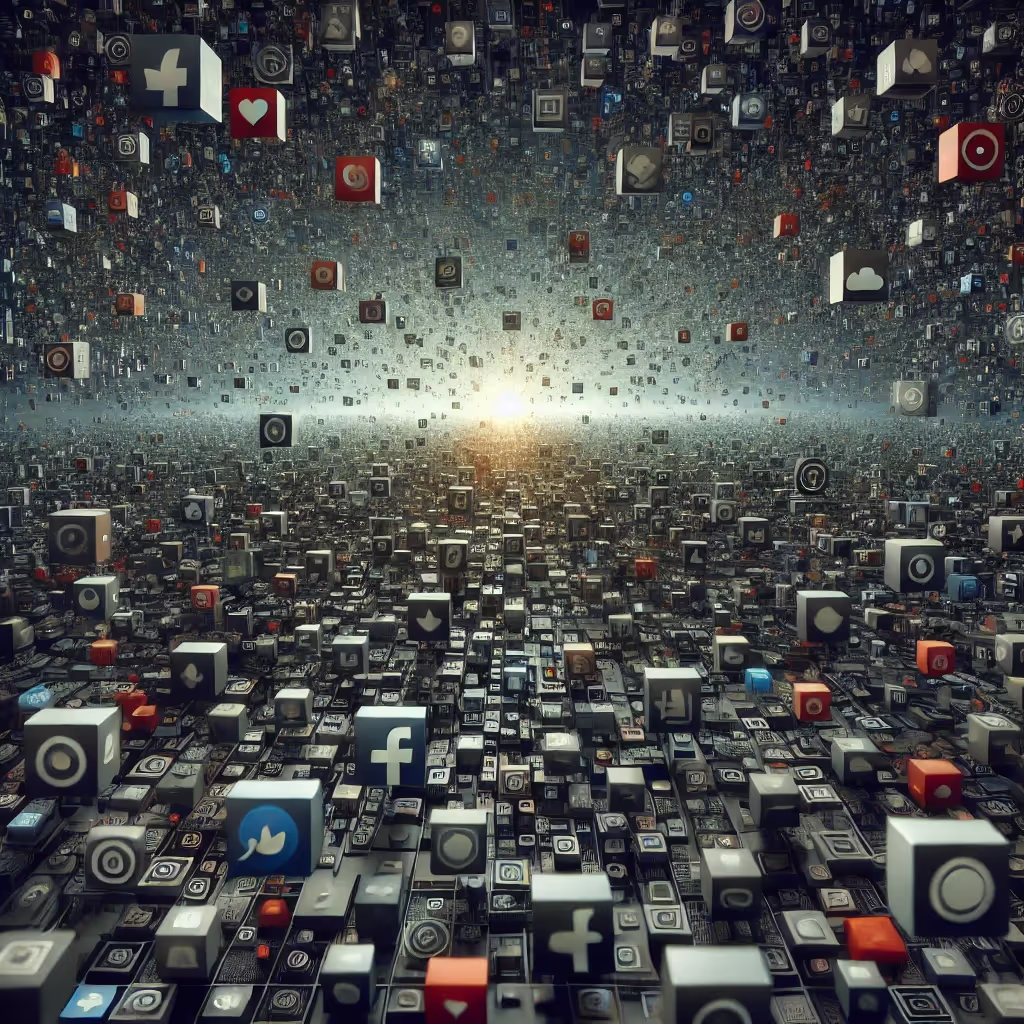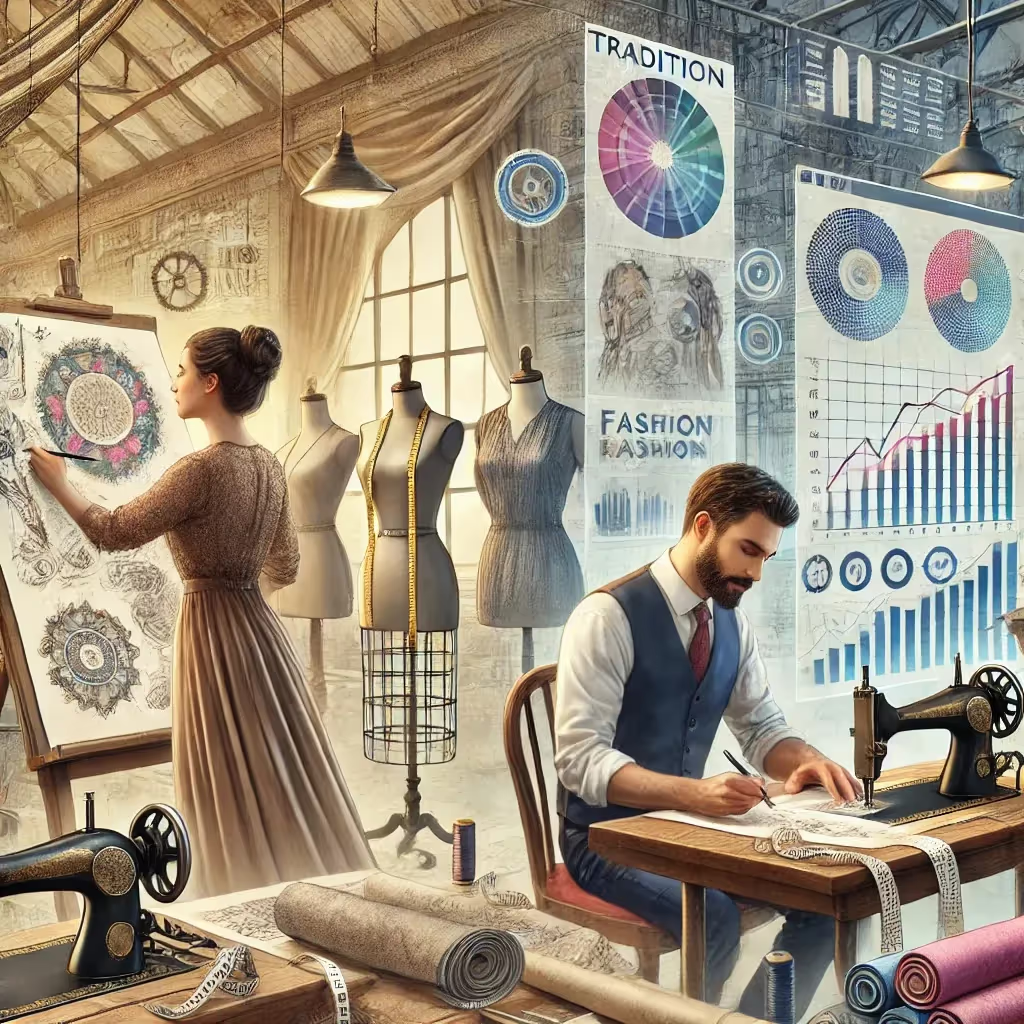Once upon a time, digital products and services were a treasure trove of novelty—a galaxy brimming with new frontiers for users to explore. Every new app or digital service promises a new way of connecting, creating, or consuming. It was a time when being online meant a headlong plunge into an adventure. But that was then. Today, we live in an era where everything digital seems to blur into a single hum of commoditized experiences, an endless stream of sameness. How did we get here, and what does it mean for users and creators?
The Rapid Digital Growth Curve: When New Became Commonplace
To be amazed by digital transformation in the 21st century is almost redundant, like marvelling at the sun rising every day. But step back for a moment: consider that as of 2024, over 5.3 billion people are using the internet—that's over 66% of the global population—with nearly 6.8 billion smartphone subscriptions worldwide. The number of digital platforms offering services like streaming, food delivery, online communication, and productivity tools has exploded over the past decade. Streaming services, for example, went from 4 major platforms in 2010 to well over 200 globally by 2023.
In the early days, Netflix, Spotify, and even email revolutionized how we interacted with media and each other. They represented a break from traditional mediums—TV channels, CD collections, or the detailed art of hand-written letters. But today? Netflix is just one of hundreds of streaming services, and a Spotify playlist is one in an ocean of millions. Every imaginable corner of digital experience—from food delivery apps to mobile fitness trainers—has countless clones. The initial spark of amazement has now turned into something far more complicated: sameness wrapped in countless packages.
A Sea of Options: From Astonishment to Apathy
At first, this surge in digital services felt like a gift basket of endless possibilities. Imagine telling your past self from just 15 years ago that they could choose from ten different apps to order dinner, stream music, or watch a TV show—all in a matter of seconds. They’d be amazed. And yet, as more and more services emerged, the initial surprise dulled into routine. What was once groundbreaking has become a comfortable, yet sometimes boring, necessity.
Consumers, after all, are not built to endlessly surf a wave of "new" without becoming desensitized. The sheer volume of services offering nearly identical value propositions has shifted the user mindset from excitement to a struggle against decision fatigue. Choosing between HBO Max, Disney+, Amazon Prime Video, and Netflix now feels less like being a kid in a candy store and more like trying to guess which identical candy bar might have a surprise center.
According to a recent study, the average individual subscribes to at least 4 streaming services and 3 different delivery apps—and those numbers are only growing. Yet despite these options, 76% of users admit they often feel overwhelmed by the sheer number of choices available to them.
The Great Expectations Shift: Overcoming Boredom and Seeking Depth
What happened to those early days when every new app felt like a revelation? It turns out, it’s not the offerings themselves that have dulled, but our expectations as consumers. If you offer someone a glimpse into something revolutionary every month, it won’t take long before they expect that level of magic consistently.
This is partly due to the dopamine-driven cycle of novelty. Every time we discover a new app, get a push notification with a special offer or hear about the latest "must-have" platform, our brains give us a dopamine hit—a reward for experiencing something new. But the thing with dopamine is that it’s insatiable. It always wants more, but over time, the bar for "new" keeps rising. Enter the world of TikTok, where every swipe is a fresh dopamine hit, each one shorter and more intense than the last. Eventually, even TikTok scrolls feel mundane, leaving us yearning for something deeper.
A fascinating example of this dynamic can be seen with Notion. As a productivity tool, Notion promised to revolutionize the organization with its flexible, modular approach—and initially, it succeeded. The learning curve, though, was steep enough that many users were left feeling frustrated rather than empowered. What began as a refreshing, empowering way to manage information quickly became another tool in a sea of alternatives, indistinguishable from Trello, Evernote, or Monday.com for many users, especially those who didn’t want to climb that mountain.
The Rise and Fall of Digital Services: Why Some Succeed and Others Don’t
In the landscape of digital services, success is often fleeting, and for every industry giant that reaches the zenith of popularity, many others flounder in their shadows. The line between success and failure in this highly competitive market is razor-thin, often hinging on factors that are difficult to predict, but which follow certain patterns over time.
The initial allure of many digital services lies in their promise to disrupt established industries or revolutionize user experiences. However, once the novelty wears off, only those that continue to evolve with user expectations survive. Sustained success requires not just innovation but adaptability, a deep understanding of user needs, and the ability to execute flawlessly on these insights.
Take, for instance, Instagram. It began as a simple photo-sharing app but has consistently evolved to meet the shifting expectations of its user base. From introducing Stories to IGTV, Instagram maintained its relevance by integrating new features that align with how people consume content in the digital age. In contrast, Quibi’s downfall wasn’t due to a lack of innovation—its concept of premium short-form content seemed promising—but because it failed to understand the user’s journey in an already-saturated content space. Quibi didn’t adapt to how people preferred to watch content; it wasn’t easily shareable, and the paywall felt like an unnecessary obstacle for something users were already getting for free elsewhere.
The biggest mistakes made by digital services that fail can often be distilled into two categories:
- Misjudging User Behavior: Services like Google Glass were too far ahead of the curve, betting on a future that users weren’t ready for. Others, like Myspace, didn’t anticipate how quickly user preferences could change, allowing more dynamic platforms like Facebook to usurp their position.
- Overcomplicating Simplicity: A good example is Notion, which sought to replace several tools with one all-encompassing productivity platform. While Notion offers incredible flexibility and power, it also alienates users who don't want to invest significant time in learning the tool. Success stories like Slack demonstrate the power of intuitive design—simple, easy onboarding, and immediate value delivery.
In a world of endless choices, digital services that succeed long-term are those that reduce friction, remain nimble, and deliver meaningful experiences. It’s no longer enough to just be "new" or "different"; services need to feel indispensable, seamlessly woven into the fabric of users' daily lives. Only then can they avoid the inevitable commoditization that spells the end for so many promising platforms.
What Disruption Means Now: Reimagining Digital Experiences
The commoditization of digital services presents a profound challenge: how do you stand out in a landscape that has seemingly exhausted all angles of convenience, connection, and consumption? The answer lies in a fundamental rethinking of what we offer—not in terms of features but in terms of how we engage with human nature.
- Eliminating Friction: To eliminate the adoption friction faced by products like Notion, the next wave of successful digital services must prioritize effortless onboarding. It’s not enough to be powerful—users need to experience that power intuitively within moments of signing up.
- Surprise and Delight: Breaking the dopamine saturation involves crafting experiences that genuinely surprise and delight users—something that feels personal, novel, and emotionally resonant. Netflix's "Bandersnatch" interactive episode did this briefly by turning passive watching into an engaging decision-making process.
- Depth Over Breadth: Instead of being another "me too" service that’s everything to everyone, products need to find niches where they can offer unmatched depth. This is where the brand intersects with product strategy. Apple’s Fitness+ succeeds not because it is the only fitness service, but because it uniquely integrates with the Apple ecosystem, enhancing the value of the devices users already own.
Brand, Strategy, and Achievable Actions: Building the Future of Digital Products
To navigate the commoditized digital ocean, it’s not about having the most features or the shiniest marketing campaign; it’s about building a brand that resonates with real human needs and strategies that transform these aspirations into achievable actions. Successful digital products today:
- Focus on Genuine User Needs: Instead of trying to replicate what’s already out there, ask what’s missing. This goes beyond convenience to emotional fulfillment—why do people feel disconnected from current offerings, and how can we bridge that gap?
- Create a Seamless Experience: User experience is now more valuable than any flashy feature set. The apps that succeed are those that feel like a natural extension of the user's intent. Spotify's Discover Weekly isn’t just a playlist; it’s an experience of being understood by an algorithm—a moment of human connection via AI.
- Build Emotional Resilience: The companies that succeed in a commoditized market know that user loyalty isn’t built on novelty alone. It’s built on emotional resilience—helping users feel they are on a journey. Duolingo keeps users engaged in language learning not through the promise of fluency alone but by making the process fun and gratifying every single day.
Hope for the Future: Moving Beyond Sameness
The current landscape of digital services, though dominated by sameness, also offers a powerful opportunity: the chance to create experiences that move beyond the superficial. The future of digital innovation lies in human-centric design, where the primary focus is on fulfilling deeper emotional and psychological needs, rather than bombarding users with endless content or convenience.
For example, mindfulness apps like Headspace and Calm aren’t just about meditation; they offer users a reprieve from the constant bombardment of information and provide a structured way to improve mental well-being. These services have tapped into a growing need for digital products that nourish rather than overwhelm.
Similarly, we’re seeing a rising demand for platforms that prioritize community over content. The success of apps like Discord and Clubhouse underscores this shift—users crave meaningful interaction in spaces that feel intimate, authentic, and participatory. These platforms are offering something that the faceless, algorithm-driven feeds of Instagram or Facebook struggle to provide: genuine connection and shared experiences.
Another key to breaking away from digital sameness lies in focusing on personalization at scale. The future will favour platforms that are not just content repositories but curators of experiences. For instance, Spotify’s Discover Weekly playlist doesn’t just recommend music—it builds an emotional bond by showing that the platform understands the user’s tastes and desires. This shift from content consumption to user connection is where digital services can truly innovate.
As we look forward, the most successful digital services will be those that reimagine what it means to offer value, not through endless options but through deeply purposeful engagement. The challenge is not to offer more of the same but to deliver better, more enriching experiences that speak to the user’s deeper needs. This is where innovation still has the power to amaze and captivate—by transcending the commodity trap and focusing on what truly matters: creating digital spaces that enhance our lives, not just fill our time.





